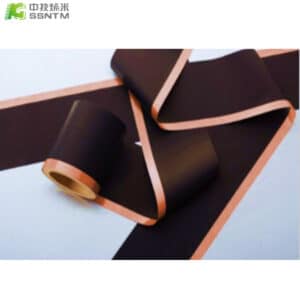At any time, there is less than 1 to 2% of the battery binder used inside the lithium-ion battery, which plays an important core role, and often because of some characteristics of the binder polymer has unexpected effects on battery performance.
1) Performance of PVDF
Polyvinylidene fluoride (PVDF) is a polymer material with high dielectric constant, has good chemical stability and temperature characteristics, has excellent mechanical properties and processability, and has positive uses for improving bonding properties, and is widely used in lithium-ion batteries as a positive and negative electrode binder.
The important factors affecting the adhesion of PVDF are molecular weight, crystallinity, PVDF modification, cathode material and conductivity type. The larger the molecular weight of PVDF, the stronger the bond, the greater the stripping strength of the pole sheet. The higher the crystallinity, the closer the stacking between the molecular chains, the greater the intermolecular use force, and the better adhesion. PVDF has good performance as a binder for lithium-ion batteries. The most important factors affecting its use are the degree of dissolution and moisture effect of PVDF powder in NMP solvent.
2)CMC and SBR
CMC adhesive liquid has good adhesion to metal foil, and has conductive property. CMC glue viscosity will decrease with the increase of temperature, easy moisture absorption, poor elasticity. Styrene-butadiene rubber (SBR) is a water-based binder, a polymer material with good resistance to water and aging.
Relatively speaking, SBR is more cohesive, but it is easy to break milk under long-term agitation, thus damaging the structure and reducing its cohesiveness. Under normal circumstances, SBR is added at the later stage of agitation. At the same time, the dispersion effect of SBR is not as good as CMC, and too much SBR will appear larger swelling, so SBR can not be completely used as a binder.
3) Polyacrylic acid (PAA) and its salt binder
Polyacrylic acid is a water-soluble chain polymer, which can form polyacrylates with many metal ions. For example, polyacrylic acid and its salt have many oxygen-containing groups (-COOH) in the molecular chain, which can form hydrogen bonds with the surface of silicon carbon active materials, giving strong bonding force between active particles and fluid collectors, and alleviating the volume expansion of silicon-based materials. It can also improve the cycle performance of the battery and improve the life of the battery. Sodium polyacrylate, sodium polyacrylate is easily soluble in water, has the purpose of thickening, and can be used as a thickener for lithium-ion battery slurry.
4) Polytetrafluoroethylene (PTFE) class
PTFE monomer molecular formula is (CF2CF2), PTFE has good adhesion, can form an elastic mesh structure in the electrode matrix, in this structure, the active substances not only contact each other well, is conducive to the conduction of electrons, but also can resist the expansion and contraction caused by electrode charging and discharging. It can improve the discharge performance and storage life of lithium-ion batteries.

To meet different binder application,Different items different slurries formula. CAW1\ CAW2 \CAW3 \CAW4\ CCW1\ CCW2. Different slurries formula,different coating thickness,different conductivity

